Quick Homemade Pizza Sauce: Creative Ideas for Pizzas
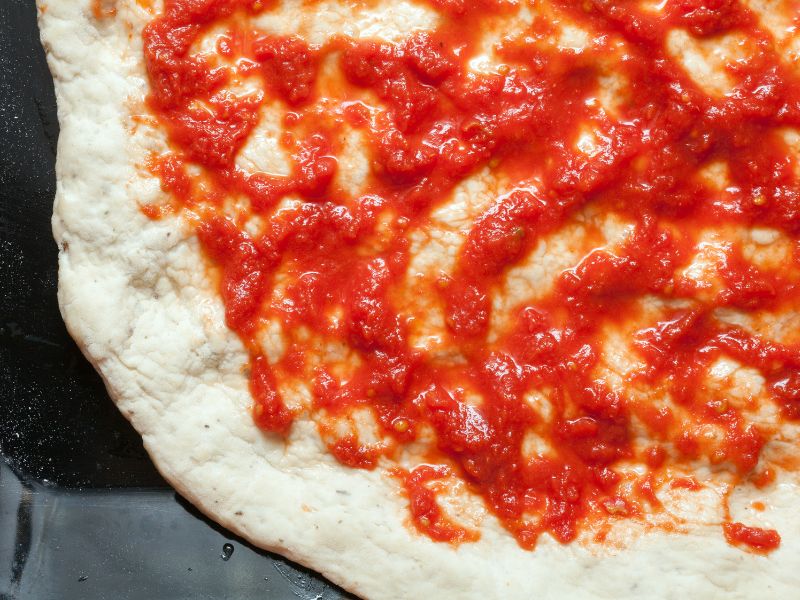
Various Pizza Sauce Recipes
When crafting the perfect pizza, the sauce serves as the foundation for all other flavors. There are myriad recipes out there, but a few stand out for their simplicity and excellence: best pizza sauce, no-cook, easy recipe, and homemade sauce.
You may have a glance in the following table to choose your preferred type of pizza sauce:
|
Recipe Type |
Key Ingredients |
Preparation Time |
|
Best Pizza Sauce |
Tomatoes, oregano, salt, sugar |
1 hour simmer |
|
No-Cook |
Canned tomatoes, basil, garlic powder, olive oil |
Immediate use |
|
Easy Recipe |
Garlic, tomatoes, sugar, salt |
30 minutes simmer |
|
Homemade Sauce |
Pureed tomatoes, herbs |
Varies by recipe |
Each recipe caters to different needs but shares a common goal: to create a memorable base for a delicious pizza.
Clear and Simple Guide to Make Homemade Pizza Sauce
Ingredients
- 1 (28 oz) can crushed tomatoes
- 1 (6 oz) can tomato paste
- 2 tablespoons olive oil
- 2-3 cloves garlic, minced
- 1 teaspoon dried oregano
- 1 teaspoon dried basil
- 1/2 teaspoon sugar
- 1/2 teaspoon salt
- 1/4 teaspoon black pepper
Equipment Needed
- Medium saucepan
- Blender
- Wooden spoon or whisk
- Measuring spoons
Instructions
- Heat olive oil in a medium saucepan over medium heat. Add minced garlic and cook for 30-60 seconds until fragrant.
- Add crushed tomatoes, tomato paste, oregano, basil, sugar, salt, and pepper to the pan. Stir to combine.
- Bring the sauce to a simmer, then reduce heat to low and let it simmer gently for 15-30 minutes, stirring occasionally.
- Taste and adjust seasonings as needed. If the sauce is too thick, add a little water. If too thin, simmer for a few more minutes.
- Remove from heat and let cool slightly before using on your pizza. Any leftover sauce can be refrigerated for up to a week or frozen for later use.
Nutrition Facts (per 1/4 cup serving)
- Calories: 34
- Total Fat: 0.7g
- Carbohydrates: 5.5g
- Fiber: 1.3g
- Sugars: 2.4g
- Protein: 1.4g
- Sodium: 219mg
Notes
- For a smoother sauce, blend the ingredients in a food processor before simmering.
- Feel free to add other herbs or spices to customize the flavor to your liking.
- This recipe yields about 3 cups of sauce, enough for 3-4 large pizzas.
This homemade pizza sauce is quick, easy, and much more flavorful than store-bought versions. It's perfect for creating delicious homemade pizzas!
Key Differences between Pasta Sauce and Pizza Sauce

The following table provides a clear visual comparison of the main differences between pizza sauce and pasta sauce, highlighting their unique characteristics and purposes in Italian cuisine.
|
Characteristic |
Pizza Sauce |
Pasta Sauce |
|
Cooking Process |
Typically uncooked or minimally cooked |
Usually cooked and simmered for longer |
|
Consistency |
Thicker, more paste-like |
Thinner, more watery |
|
Texture |
Smooth and well-blended |
Can range from smooth to chunky |
|
Main Ingredients |
Pureed tomatoes, tomato paste, basic herbs |
Crushed tomatoes, may include more vegetables and meat |
|
Seasoning |
Simple, focused on oregano and basil |
Wider variety of herbs and spices |
|
Flavor Profile |
Tangy and fresh-tasting |
Richer and more complex |
|
Water Content |
Lower |
Higher |
|
Purpose |
Complements pizza toppings and crust |
Primary flavoring for pasta dishes |
|
Cooking Method |
Cooks with the pizza in the oven |
Added to already-cooked pasta |
|
Versatility |
Specifically designed for pizzas |
Can be used in various pasta dishes |
In sum, while both sauces serve as foundational elements in Italian cuisine, their roles and characteristics in meal preparation are distinctive, with each sauce types amplifying the dish it's meant to complement.
Choosing Tomatoes for Pizza Sauce

Are San Marzano Tomatoes Really the Best?
San Marzano tomatoes are often lauded for their robust flavor and ideal balance of acidity and sweetness, making them a top choice for pizza sauce. These Italian tomatoes are slender and pointed with fewer seeds, contributing to a thicker texture.
When cooked down, their rich taste intensifies, which is why many chefs and cooking experts insist on using San Marzano tomatoes for an authentic pizza sauce experience.
However, not all brands labeled "San Marzano" are authentic, and therefore, one should look for a certification label that ensures the tomatoes are genuinely from the San Marzano region of Italy. Using extra-virgin olive oil can further enhance the sauce, complementing the natural flavors of these premium tomatoes.
Can You Use Diced Tomatoes or Crushed Tomatoes?
Deciding between diced tomatoes or crushed tomatoes requires considering the desired texture of the pizza sauce. Diced tomatoes, while convenient, often retain a more distinct and chunky presence in the sauce, which might be suitable for rustic-style pizzas.
Crushed tomatoes, which are sometimes available as canned crushed tomatoes, provide a smoother consistency that blends seamlessly with herbs and spices in the sauce. The smooth texture of crushed tomatoes is typically preferred for a traditional pizza base sauce, allowing a uniform spread over the dough.
Tomato passata, which is essentially uncooked tomato puree that has been strained of skins and seeds, is another option. It creates a silky base for the sauce that can be enhanced with olive oil, garlic, and herbs.
Whether opting for fresh tomatoes, canned whole tomatoes, or tomato products like passata, the goal is to achieve the right balance of flavor and texture suited to the style of pizza being created.
How to Control the Amount of Pizza Sauce Used
One approach is to use a standardized measuring tool such as a portioning cup. This ensures a consistent amount across all pizzas, enhancing not just the taste but also ensuring uniform cook times.
For homemade pizzas, beginning with approximately 1/4 cup of sauce for a 12-inch pizza is recommended. This serves as a base layer and prevents the crust from becoming soggy. Here’s a simple guide to follow:
- 10-inch Pizza: 3 tablespoons of sauce
- 12-inch Pizza: 1/4 cup of sauce
- 14-inch Pizza: 1/3 cup of sauce
- 16-inch Pizza: 1/2 cup of sauce
Remember to avoid overloading the pizza with sauce to ensure the crust cooks evenly and toppings are able to shine through without being overpowered.
Storage Tips for Homemade Pizza Sauce
Refrigeration and Freezing Techniques
Refrigeration: Homemade pizza sauce can last in the refrigerator for up to 5-7 days when stored properly. To refrigerate, pour the sauce into an airtight container or a glass jar with a tight-fitting lid. For enhanced preservation, add a thin layer of extra virgin olive oil on top of the sauce before sealing. This creates a barrier that can help protect the sauce from air exposure.
Freezing: For longer storage, homemade pizza sauce freezes well and can be kept in the freezer for up to six months. To freeze pizza sauce, portion it into usable quantities in freezer bags or freezer-safe containers. Squeeze out any excess air before sealing to prevent freezer burn. Thaw the sauce overnight in the refrigerator before use.
Long-Term Storage Solutions
Shelf Stability: While homemade pizza sauce is not shelf-stable like commercially canned sauces, certain preparations can extend its shelf life. When making sauce, using fresh, high-quality tomatoes and sterilizing storage containers can aid in longevity. However, without proper canning techniques, it is best to refrain from pantry storage to avoid the risk of spoilage or foodborne illness.
Canning: For those experienced in canning, homemade pizza sauce can be made shelf-stable through proper canning methods. This involves heating the sauce to a specific temperature and sealing it in sterilized jars, allowing it to be kept in the pantry for up to a year. Always follow up-to-date safety guidelines when canning to ensure the sauce remains safe to consume.
Versatile Uses of Pizza Sauce beyond Pizza Crust
- Pasta sauce: Use pizza sauce as a quick and easy pasta sauce. It works well with spaghetti, penne, or other pasta shapes.
- Dipping sauce: Serve pizza sauce as a dip for breadsticks, mozzarella sticks, garlic bread, or fried appetizers.
- Sandwich spread: Use it as a flavorful spread on sandwiches or wraps instead of mayonnaise or mustard.
- Meatball or chicken parm topping: Spoon pizza sauce over meatballs or chicken parmesan for added flavor.
- Soup base: Use pizza sauce as a base for minestrone or vegetable soups to add a tomato flavor.
- Casserole ingredient: Mix pizza sauce into casseroles like lasagna or baked ziti for extra flavor.


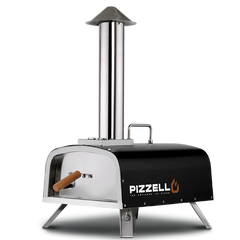
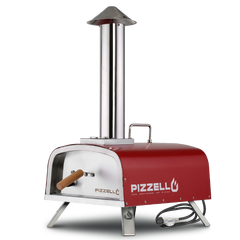
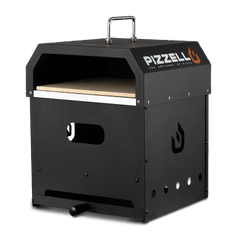
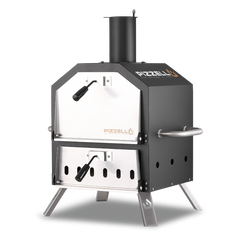





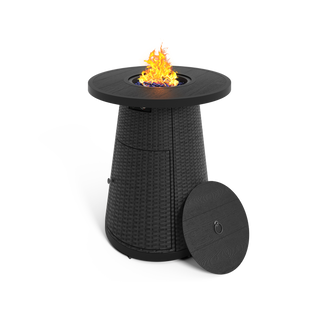

 Aluminum Dining Table
Aluminum Dining Table
 WPC Dining Table
WPC Dining Table
 HDPE Dining Table
HDPE Dining Table
 Cart
Cart
 Gas Burner
Gas Burner
 Hat
Hat
 Apron
Apron
 Swivel Rocker Set
Swivel Rocker Set
 Textilene Chairs
Textilene Chairs
 HDPE Chairs
HDPE Chairs
 Wicker Counter Height Barstools
Wicker Counter Height Barstools
 Metal Counter Height Barstools
Metal Counter Height Barstools


























